1 of 8
Download to read offline
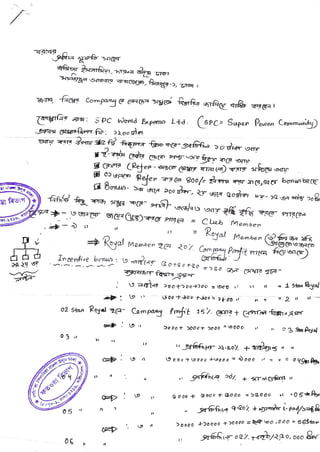
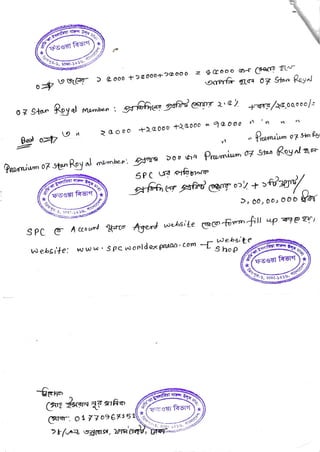

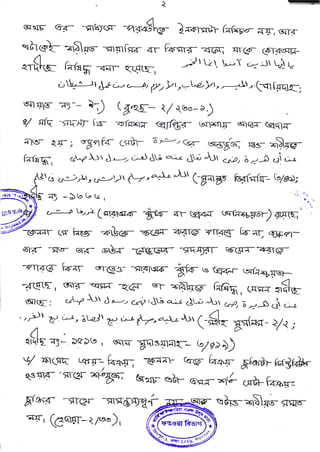
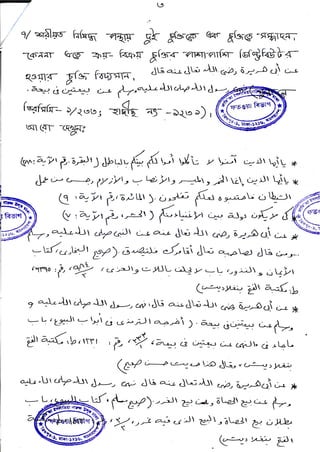
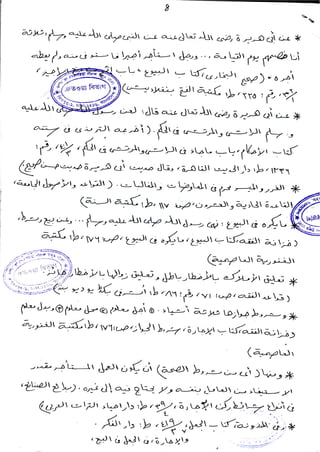
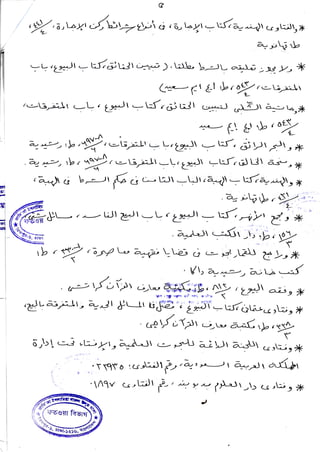
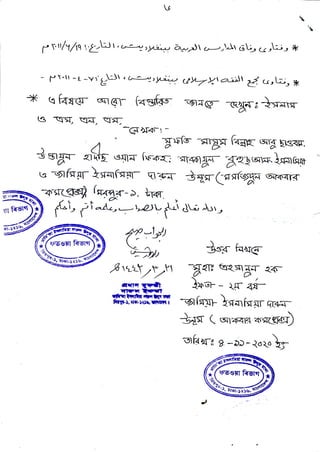
Ad
Recommended
Mess meal with bankers fotwa.pdf
Mess meal with bankers fotwa.pdfImran Nur Manik
╠²
Mess meal with bankers fotwa.pdf
manik, fotwa, mess meal,Vitamins & vitamin containing drugs manik
Vitamins & vitamin containing drugs manikImran Nur Manik
╠²
Vitamins are organic compounds that are essential nutrients for the human body. There are 13 essential vitamins that must be obtained through diet as the body cannot synthesize them. Vitamins play important roles in growth, development, and metabolic processes. Deficiencies can lead to specific diseases. Vitamins can be fat-soluble like A, D, E and K which are stored in the body, or water-soluble like the B vitamins and C which are not stored. Dietary sources and functions of several key vitamins are discussed.Ó”╣Ó¦üÓ”░Ó”«Ó”żÓ¦ć Ó”«Ó¦üÓ”ĖÓ”ŠÓ”╣Ó”ŠÓ”░Ó”ŠÓ”ż Ó”ÅÓ”░ Ó”ČÓ”░Ó¦¤Ó¦Ć Ó”¼Ó”┐Ó”¦Ó”ŠÓ”©
Ó”╣Ó¦üÓ”░Ó”«Ó”żÓ¦ć Ó”«Ó¦üÓ”ĖÓ”ŠÓ”╣Ó”ŠÓ”░Ó”ŠÓ”ż Ó”ÅÓ”░ Ó”ČÓ”░Ó¦¤Ó¦Ć Ó”¼Ó”┐Ó”¦Ó”ŠÓ”©Imran Nur Manik
╠²
Ó”╣Ó¦üÓ”░Ó”«Ó”żÓ¦ć Ó”«Ó¦üÓ”ĖÓ”ŠÓ”╣Ó”ŠÓ”░Ó”ŠÓ”ż Ó”ÅÓ”░ Ó”ČÓ”░Ó¦¤Ó¦Ć Ó”¼Ó”┐Ó”¦Ó”ŠÓ”©Physical Pharmacy-I Lab, Manik
Physical Pharmacy-I Lab, ManikImran Nur Manik
╠²
The document outlines various lab experiments in a Physical Pharmacy-I course at Northern University Bangladesh, focusing on the preparation of solutions, standardization of NaOH solution, and preparation of buffer solutions. It details principles, methods, and calculations for creating standard solutions and diluted solutions, along with necessary precautions and apparatus used in the experiments. The lab notebook contains multiple experiments, their principles, and protocols aimed at equipping students with the practical skills required in the field of pharmacy.2114:Laboratory Note Book (Sample),manik
2114:Laboratory Note Book (Sample),manikImran Nur Manik
╠²
This document is a laboratory notebook for an inorganic pharmacy II lab, prepared by Md Tariqul Islam, with the ID 05200101691. It contains multiple pages numbered consecutively, detailing lab activities but primarily serving as a formal record. The content appears to be a structured log for laboratory experiments conducted as part of the course.Plants in complimentary and traditional systems of medicine MANIKanik
Plants in complimentary and traditional systems of medicine MANIKanikImran Nur Manik
╠²
The document provides an overview of complementary and alternative medicine (CAM) and traditional medicine systems such as Ayurveda, Unani, and Homeopathy, highlighting their principles, practices, and treatments. It details specific herbal remedies and their uses in treating various ailments, including descriptions of plants like Punarnava, Vasaka, and Amla among others. Additionally, it discusses the historical context and cultural significance of these traditional medical systems in Bangladesh and beyond.Plant Analysis (Pharmacognosy) MANIK
Plant Analysis (Pharmacognosy) MANIKImran Nur Manik
╠²
The document discusses the extraction of plant constituents, detailing various methods both with and without solvents, such as expression, sublimation, distillation, and maceration. It also covers separation techniques like chromatography and fractional crystallization, emphasizing their importance in isolating and analyzing chemical constituents found in plants. Phytochemistry is introduced as the study of these constituents, which are classified into active and inert categories based on their therapeutic effects.The Plant Cell (Pharmacognosy) MANIK
The Plant Cell (Pharmacognosy) MANIKImran Nur Manik
╠²
The document outlines the fundamental aspects of cells, emphasizing their classification into eukaryotic and prokaryotic types, with plant cells featuring unique structures like cell walls and plastids. It details various plant cell types (parenchyma, collenchyma, sclerenchyma, xylem, and phloem) and compares plant and animal cells, highlighting differences in size, shape, and presence of certain organelles. Additionally, it discusses plant morphology, the structure and function of various plant organs, and the importance of studying plant morphology in biological fields.Lipids (Pharmacognosy) MANIK
Lipids (Pharmacognosy) MANIKImran Nur Manik
╠²
This document provides information about various lipids (fats and oils) obtained from plants and animals. It discusses the basic chemistry of lipids, describing them as esters of fatty acids and alcohols. Specific lipids are then outlined, including their source, composition, properties, and some uses. Key lipids discussed include olive oil, coconut oil, castor oil, linseed oil, peanut oil, chaulmoogra oil, and beeswax.Introduction (Pharmacognosy) MANIK
Introduction (Pharmacognosy) MANIKImran Nur Manik
╠²
Pharmacognosy is the study of medicinal plants and natural products. The term was introduced in 1815 and comes from Greek roots meaning "drug" and "knowledge." It involves the study of plants as potential drug sources from pre-historic use through various civilizations like Chinese, Babylonian, Egyptian, Indian, and Greek. Modern pharmacognosy has broad applications in medicine, agriculture, cosmetics, and other industries and offers career opportunities in academia, private industry, and government.Drug Literature and Publications (Pharmacognosy) MANIK
Drug Literature and Publications (Pharmacognosy) MANIKImran Nur Manik
╠²
The document discusses the definitions and distinctions between drugs and medicines, highlighting that drugs are active pharmaceutical ingredients (APIs) while medicines are formulated forms of drugs with specific dosages. It also addresses sources of drugs, the role of pharmacopoeias and formularies, and classifies drugs as official, unofficial, and non-official based on their recognition and use. Additionally, it explains concepts such as treatises, monographs, and international non-proprietary names (INN) for drugs.Crude Drugs (Pharmacognosy) MANIK
Crude Drugs (Pharmacognosy) MANIKImran Nur Manik
╠²
The document covers the definition and classification of crude drugs, including their sources, constituents, and extraction methods. It outlines the advantages and disadvantages of various classification systems such as alphabetical, morphological, taxonomical, chemical, and pharmacological. Additionally, it details the preparation steps for commercial drug markets, including collection, harvesting, drying, quality control, and addressing adulteration issues.Carbohydrate (Pharmacognosy) MANIK
Carbohydrate (Pharmacognosy) MANIKImran Nur Manik
╠²
Carbohydrates are organic compounds made of carbon, hydrogen, and oxygen. They play a vital role in life and include monosaccharides (simple sugars), disaccharides, and polysaccharides. Common monosaccharides are glucose and fructose. Sucrose is a prevalent disaccharide composed of glucose and fructose. Starch and cellulose are examples of polysaccharides. Carbohydrates serve important functions and some like glucose are used as nutrients. Tests can identify the presence of carbohydrates and their type.Alkaloids (Pharmacognosy) MANIK
Alkaloids (Pharmacognosy) MANIKImran Nur Manik
╠²
The document discusses alkaloids, which are nitrogen-containing plant compounds. It defines alkaloids and explains that they are difficult to define precisely due to overlapping properties with other amines. It then covers the distribution of various alkaloids in different plant parts, their chemical properties, pharmacological actions, classification based on ring structure, extraction methods, and chemical tests to identify alkaloids.Exam Strategy with Imran Nur
Exam Strategy with Imran NurImran Nur Manik
╠²
Students should calculate the time allotted per mark on their exam to help manage their time efficiently. For example, a 40 mark exam in 2.25 hours means each mark is worth 3 minutes and 22 seconds. Students should also practice solving previous years' exam questions and ensure they have the proper stationaries like pens, pencils, erasers and papers like admit cards for their exam. Proper preparation of time management and materials can help students complete their written exams successfully.Volatile oil (full)
Volatile oil (full)Imran Nur Manik
╠²
The document discusses volatile oils, their properties, uses, and methods of extraction from plants. It highlights their therapeutic actions, applications in perfumery, and various extraction techniques such as distillation, expression, and solvent extraction. Additionally, it differentiates between volatile oils and fixed oils, and provides specific examples of botanical sources and their chemical constituents.Tannins
TanninsImran Nur Manik
╠²
Tannins are a class of polyphenolic biomolecules known for their astringent properties, binding to proteins and other compounds, and are utilized in medicine, tanning, and as precipitating agents in laboratories. They can be classified into pseudo-tannins and true tannins, with the latter further divided into hydrolysable, condensed, and complex tannins. Various chemical tests, such as the goldbeater's skin test and gelatin test, are used to identify tannins in substances like black catechu and nutgall, which have medicinal uses as astringents and antidotes.Resins and resins combinations
Resins and resins combinations Imran Nur Manik
╠²
This document provides information about various resins and their combinations. It defines resins as amorphous products with complex chemical nature. Resins are classified into 5 groups based on their combinations: balsams, oleoresins, gum resins, oleo-gum resins, and glycoresins. The key chemical constituents of resins are discussed. Examples of commonly used resins like capsicum, ginger, cannabis are described along with their chemical constituents and uses.Poisonous plant and natural pesticide 2021 (jb)
Poisonous plant and natural pesticide 2021 (jb)Imran Nur Manik
╠²
The document discusses poisonous plants and natural pesticides, detailing definitions, classifications, uses, and the effects of various plants and substances on human health. It covers the distinction between drugs and poisons, as well as the classification of pesticides and their impact on pest control. Key plants mentioned include Datura, Tobacco, Neem, and Strychnine, along with their toxicological effects and beneficial uses.Glycosides Note
Glycosides Note Imran Nur Manik
╠²
The document provides an overview of glycosides, highlighting their chemical composition, physical properties, and classifications. Glycosides are non-reducing compounds yielding sugars upon hydrolysis and can be categorized based on linkage types, chemical nature, sugar types, and therapeutic activity. Examples of glycosides and their uses, such as in medicine and flavoring, are discussed, along with specific plants associated with various glycosides.Alkaloids (full)
Alkaloids (full)Imran Nur Manik
╠²
1. Alkaloids are nitrogenous organic compounds that are derived from plants and have pharmacological effects in humans. They have diverse chemical structures and properties.
2. Alkaloids can be detected using various chemical tests like Mayer's reagent, Hager's reagent, and Dragendorff's reagent which cause precipitation or color changes.
3. Alkaloids have many pharmacological uses including as sedatives, anticholinergics, narcotics, local anesthetics, and to treat conditions like asthma, ulcers, and malaria. Some key alkaloid-containing plants discussed are belladonna, coca, and cinchona.Design and operation of Clean room MANIK
Design and operation of Clean room MANIKImran Nur Manik
╠²
The document discusses the design and operation of clean rooms, emphasizing the importance of controlling contamination from various sources, both external and internal. It covers the classification of clean rooms based on particle counts, different airflow systems (such as conventional and unidirectional), and air filtration methods using HEPA and ULPA filters. Additionally, the document details the mechanisms of filtration and methods for testing filter effectiveness.Packaging Technology
Packaging TechnologyImran Nur Manik
╠²
The document discusses the basic principles of packaging in pharmaceuticals, focusing on containers and closures essential for maintaining the therapeutic effectiveness of drugs. It outlines ideal qualities of packaging materials, types of containers and their specific uses, as well as materials such as glass, metals, and plastics utilized in the packaging process. Additionally, it emphasizes the importance of closures for preventing contamination and preserving product integrity.Compaction and compression of powder
Compaction and compression of powderImran Nur Manik
╠²
The document discusses the compaction and compression of powders in the pharmaceutical industry, highlighting their importance in manufacturing tablets and capsules. It explains key concepts such as compression, consolidation, the properties of powders, factors affecting flow rates, and the stages of tablet compression. Additionally, it outlines various mechanisms of bonding, the relevance of Heckel's equation, and factors influencing tablet strength.Parenteral Products
Parenteral ProductsImran Nur Manik
╠²
The document discusses sterile and parenteral products, defining them and outlining their characteristics, uses, and routes of administration. Parenteral routes are preferred for rapid drug action, especially when oral administration is not feasible, and require careful consideration during formulation regarding volume, solvent system, and isotonicity. It also highlights the ideal properties of parenteral products, advantages and disadvantages, and factors influencing formulation, including vehicles and solutes.List View Components in Odoo 18 - Odoo ║▌║▌▀Żs
List View Components in Odoo 18 - Odoo ║▌║▌▀ŻsCeline George
╠²
In Odoo, there are many types of views possible like List view, Kanban view, Calendar view, Pivot view, Search view, etc.
The major change that introduced in the Odoo 18 technical part in creating views is the tag <tree> got replaced with the <list> for creating list views. How to Manage Different Customer Addresses in Odoo 18 Accounting
How to Manage Different Customer Addresses in Odoo 18 AccountingCeline George
╠²
A business often have customers with multiple locations such as office, warehouse, home addresses and this feature allows us to associate with different addresses with each customer streamlining the process of creating sales order invoices and delivery orders.More Related Content
More from Imran Nur Manik (20)
Plant Analysis (Pharmacognosy) MANIK
Plant Analysis (Pharmacognosy) MANIKImran Nur Manik
╠²
The document discusses the extraction of plant constituents, detailing various methods both with and without solvents, such as expression, sublimation, distillation, and maceration. It also covers separation techniques like chromatography and fractional crystallization, emphasizing their importance in isolating and analyzing chemical constituents found in plants. Phytochemistry is introduced as the study of these constituents, which are classified into active and inert categories based on their therapeutic effects.The Plant Cell (Pharmacognosy) MANIK
The Plant Cell (Pharmacognosy) MANIKImran Nur Manik
╠²
The document outlines the fundamental aspects of cells, emphasizing their classification into eukaryotic and prokaryotic types, with plant cells featuring unique structures like cell walls and plastids. It details various plant cell types (parenchyma, collenchyma, sclerenchyma, xylem, and phloem) and compares plant and animal cells, highlighting differences in size, shape, and presence of certain organelles. Additionally, it discusses plant morphology, the structure and function of various plant organs, and the importance of studying plant morphology in biological fields.Lipids (Pharmacognosy) MANIK
Lipids (Pharmacognosy) MANIKImran Nur Manik
╠²
This document provides information about various lipids (fats and oils) obtained from plants and animals. It discusses the basic chemistry of lipids, describing them as esters of fatty acids and alcohols. Specific lipids are then outlined, including their source, composition, properties, and some uses. Key lipids discussed include olive oil, coconut oil, castor oil, linseed oil, peanut oil, chaulmoogra oil, and beeswax.Introduction (Pharmacognosy) MANIK
Introduction (Pharmacognosy) MANIKImran Nur Manik
╠²
Pharmacognosy is the study of medicinal plants and natural products. The term was introduced in 1815 and comes from Greek roots meaning "drug" and "knowledge." It involves the study of plants as potential drug sources from pre-historic use through various civilizations like Chinese, Babylonian, Egyptian, Indian, and Greek. Modern pharmacognosy has broad applications in medicine, agriculture, cosmetics, and other industries and offers career opportunities in academia, private industry, and government.Drug Literature and Publications (Pharmacognosy) MANIK
Drug Literature and Publications (Pharmacognosy) MANIKImran Nur Manik
╠²
The document discusses the definitions and distinctions between drugs and medicines, highlighting that drugs are active pharmaceutical ingredients (APIs) while medicines are formulated forms of drugs with specific dosages. It also addresses sources of drugs, the role of pharmacopoeias and formularies, and classifies drugs as official, unofficial, and non-official based on their recognition and use. Additionally, it explains concepts such as treatises, monographs, and international non-proprietary names (INN) for drugs.Crude Drugs (Pharmacognosy) MANIK
Crude Drugs (Pharmacognosy) MANIKImran Nur Manik
╠²
The document covers the definition and classification of crude drugs, including their sources, constituents, and extraction methods. It outlines the advantages and disadvantages of various classification systems such as alphabetical, morphological, taxonomical, chemical, and pharmacological. Additionally, it details the preparation steps for commercial drug markets, including collection, harvesting, drying, quality control, and addressing adulteration issues.Carbohydrate (Pharmacognosy) MANIK
Carbohydrate (Pharmacognosy) MANIKImran Nur Manik
╠²
Carbohydrates are organic compounds made of carbon, hydrogen, and oxygen. They play a vital role in life and include monosaccharides (simple sugars), disaccharides, and polysaccharides. Common monosaccharides are glucose and fructose. Sucrose is a prevalent disaccharide composed of glucose and fructose. Starch and cellulose are examples of polysaccharides. Carbohydrates serve important functions and some like glucose are used as nutrients. Tests can identify the presence of carbohydrates and their type.Alkaloids (Pharmacognosy) MANIK
Alkaloids (Pharmacognosy) MANIKImran Nur Manik
╠²
The document discusses alkaloids, which are nitrogen-containing plant compounds. It defines alkaloids and explains that they are difficult to define precisely due to overlapping properties with other amines. It then covers the distribution of various alkaloids in different plant parts, their chemical properties, pharmacological actions, classification based on ring structure, extraction methods, and chemical tests to identify alkaloids.Exam Strategy with Imran Nur
Exam Strategy with Imran NurImran Nur Manik
╠²
Students should calculate the time allotted per mark on their exam to help manage their time efficiently. For example, a 40 mark exam in 2.25 hours means each mark is worth 3 minutes and 22 seconds. Students should also practice solving previous years' exam questions and ensure they have the proper stationaries like pens, pencils, erasers and papers like admit cards for their exam. Proper preparation of time management and materials can help students complete their written exams successfully.Volatile oil (full)
Volatile oil (full)Imran Nur Manik
╠²
The document discusses volatile oils, their properties, uses, and methods of extraction from plants. It highlights their therapeutic actions, applications in perfumery, and various extraction techniques such as distillation, expression, and solvent extraction. Additionally, it differentiates between volatile oils and fixed oils, and provides specific examples of botanical sources and their chemical constituents.Tannins
TanninsImran Nur Manik
╠²
Tannins are a class of polyphenolic biomolecules known for their astringent properties, binding to proteins and other compounds, and are utilized in medicine, tanning, and as precipitating agents in laboratories. They can be classified into pseudo-tannins and true tannins, with the latter further divided into hydrolysable, condensed, and complex tannins. Various chemical tests, such as the goldbeater's skin test and gelatin test, are used to identify tannins in substances like black catechu and nutgall, which have medicinal uses as astringents and antidotes.Resins and resins combinations
Resins and resins combinations Imran Nur Manik
╠²
This document provides information about various resins and their combinations. It defines resins as amorphous products with complex chemical nature. Resins are classified into 5 groups based on their combinations: balsams, oleoresins, gum resins, oleo-gum resins, and glycoresins. The key chemical constituents of resins are discussed. Examples of commonly used resins like capsicum, ginger, cannabis are described along with their chemical constituents and uses.Poisonous plant and natural pesticide 2021 (jb)
Poisonous plant and natural pesticide 2021 (jb)Imran Nur Manik
╠²
The document discusses poisonous plants and natural pesticides, detailing definitions, classifications, uses, and the effects of various plants and substances on human health. It covers the distinction between drugs and poisons, as well as the classification of pesticides and their impact on pest control. Key plants mentioned include Datura, Tobacco, Neem, and Strychnine, along with their toxicological effects and beneficial uses.Glycosides Note
Glycosides Note Imran Nur Manik
╠²
The document provides an overview of glycosides, highlighting their chemical composition, physical properties, and classifications. Glycosides are non-reducing compounds yielding sugars upon hydrolysis and can be categorized based on linkage types, chemical nature, sugar types, and therapeutic activity. Examples of glycosides and their uses, such as in medicine and flavoring, are discussed, along with specific plants associated with various glycosides.Alkaloids (full)
Alkaloids (full)Imran Nur Manik
╠²
1. Alkaloids are nitrogenous organic compounds that are derived from plants and have pharmacological effects in humans. They have diverse chemical structures and properties.
2. Alkaloids can be detected using various chemical tests like Mayer's reagent, Hager's reagent, and Dragendorff's reagent which cause precipitation or color changes.
3. Alkaloids have many pharmacological uses including as sedatives, anticholinergics, narcotics, local anesthetics, and to treat conditions like asthma, ulcers, and malaria. Some key alkaloid-containing plants discussed are belladonna, coca, and cinchona.Design and operation of Clean room MANIK
Design and operation of Clean room MANIKImran Nur Manik
╠²
The document discusses the design and operation of clean rooms, emphasizing the importance of controlling contamination from various sources, both external and internal. It covers the classification of clean rooms based on particle counts, different airflow systems (such as conventional and unidirectional), and air filtration methods using HEPA and ULPA filters. Additionally, the document details the mechanisms of filtration and methods for testing filter effectiveness.Packaging Technology
Packaging TechnologyImran Nur Manik
╠²
The document discusses the basic principles of packaging in pharmaceuticals, focusing on containers and closures essential for maintaining the therapeutic effectiveness of drugs. It outlines ideal qualities of packaging materials, types of containers and their specific uses, as well as materials such as glass, metals, and plastics utilized in the packaging process. Additionally, it emphasizes the importance of closures for preventing contamination and preserving product integrity.Compaction and compression of powder
Compaction and compression of powderImran Nur Manik
╠²
The document discusses the compaction and compression of powders in the pharmaceutical industry, highlighting their importance in manufacturing tablets and capsules. It explains key concepts such as compression, consolidation, the properties of powders, factors affecting flow rates, and the stages of tablet compression. Additionally, it outlines various mechanisms of bonding, the relevance of Heckel's equation, and factors influencing tablet strength.Parenteral Products
Parenteral ProductsImran Nur Manik
╠²
The document discusses sterile and parenteral products, defining them and outlining their characteristics, uses, and routes of administration. Parenteral routes are preferred for rapid drug action, especially when oral administration is not feasible, and require careful consideration during formulation regarding volume, solvent system, and isotonicity. It also highlights the ideal properties of parenteral products, advantages and disadvantages, and factors influencing formulation, including vehicles and solutes.Recently uploaded (20)
List View Components in Odoo 18 - Odoo ║▌║▌▀Żs
List View Components in Odoo 18 - Odoo ║▌║▌▀ŻsCeline George
╠²
In Odoo, there are many types of views possible like List view, Kanban view, Calendar view, Pivot view, Search view, etc.
The major change that introduced in the Odoo 18 technical part in creating views is the tag <tree> got replaced with the <list> for creating list views. How to Manage Different Customer Addresses in Odoo 18 Accounting
How to Manage Different Customer Addresses in Odoo 18 AccountingCeline George
╠²
A business often have customers with multiple locations such as office, warehouse, home addresses and this feature allows us to associate with different addresses with each customer streamlining the process of creating sales order invoices and delivery orders.Paper 106 | Ambition and Corruption: A Comparative Analysis of ŌĆśThe Great Gat...
Paper 106 | Ambition and Corruption: A Comparative Analysis of ŌĆśThe Great Gat...Rajdeep Bavaliya
╠²
Dive into the glittering allure and hidden rot of the American Dream as we compare Jay GatsbyŌĆÖs lofty ambitions with Jordan BelfortŌĆÖs brazen excess. Uncover how both characters chase success at the cost of their integrity and ultimately pay the price for unchecked desire. Which downfall resonates moreŌĆöGatsbyŌĆÖs doomed romance or BelfortŌĆÖs scandalous spiral? Hit like if youŌĆÖve ever chased a dream, and follow for more literary-versus-film showdowns!
M.A. Sem - 2 | Presentation
Presentation Season - 2
Paper - 106: The Twentieth Century Literature: 1900 to World War II
Submitted Date: April 3, 2025
Paper Name: The Twentieth Century Literature: 1900 to World War II
Topic: Ambition and Corruption: A Comparative Analysis of ŌĆśThe Great GatsbyŌĆÖ and ŌĆśThe Wolf of Wall StreetŌĆÖ
[Please copy the link and paste it into any web browser to access the content.]
Video Link: https://youtu.be/4mXmSVjTLt8
For a more in-depth discussion of this presentation, please visit the full blog post at the following link: https://rajdeepbavaliya2.blogspot.com/2025/04/ambition-and-corruption-a-comparative-analysis-of-the-great-gatsby-and-the-wolf-of-wall-street.html
Please visit this blog to explore additional presentations from this season:
Hashtags:
#AmericanDream #GreatGatsby #WolfOfWallStreet #AmbitionAndCorruption #LiteratureVsFilm #Fitzgerald #Scorsese #JayGatsby #JordanBelfort #DreamOrDownfall
Keyword Tags:
The Great Gatsby, Wolf of Wall Street, American Dream analysis, ambition corruption, Gatsby vs. Belfort, F. Scott Fitzgerald themes, Martin Scorsese film, literary comparison, movie vs. novel, moral critiqueINDUCTIVE EFFECT slide for first prof pharamacy students
INDUCTIVE EFFECT slide for first prof pharamacy studentsSHABNAM FAIZ
╠²
The inductive effect is the electron-withdrawing or electron-donating effect transmitted through sigma (Žā) bonds in a molecule due to differences in electronegativity between atoms.
---
¤ö╣ Definition:
The inductive effect is the permanent shifting of electrons in a sigma bond caused by the electronegativity difference of atoms, resulting in partial charges within the molecule.Filipino 9 Maikling Kwento Ang Ama Panitikang Asiyano
Filipino 9 Maikling Kwento Ang Ama Panitikang Asiyanosumadsadjelly121997
╠²
Filipino 9 Maikling Kwento Ang Ama Panitikang AsiyanoIIT KGP Quiz Week 2024 Sports Quiz (Prelims + Finals)
IIT KGP Quiz Week 2024 Sports Quiz (Prelims + Finals)IIT Kharagpur Quiz Club
╠²
The document outlines the format for the Sports Quiz at Quiz Week 2024, covering various sports & games and requiring participants to Answer without external sources. It includes specific details about question types, scoring, and examples of quiz questions. The document emphasizes fair play and enjoyment of the quiz experience.K12 Tableau User Group virtual event June 18, 2025
K12 Tableau User Group virtual event June 18, 2025dogden2
╠²
National K12 Tableau User Group: June 2025 meeting slidesOBSESSIVE COMPULSIVE DISORDER.pptx IN 5TH SEMESTER B.SC NURSING, 2ND YEAR GNM...
OBSESSIVE COMPULSIVE DISORDER.pptx IN 5TH SEMESTER B.SC NURSING, 2ND YEAR GNM...parmarjuli1412
╠²
OBSESSIVE COMPULSIVE DISORDER INCLUDED TOPICS ARE INTRODUCTION, DEFINITION OF OBSESSION, DEFINITION OF COMPULSION, MEANING OF OBSESSION AND COMPULSION, DEFINITION OF OBSESSIVE COMPULSIVE DISORDER, EPIDERMIOLOGY OF OCD, ETIOLOGICAL FACTORS OF OCD, CLINICAL SIGN AND SYMPTOMS OF OBSESSION AND COMPULSION, MANAGEMENT INCLUDED PHARMACOTHERAPY(ANTIDEPRESSANT DRUG+ANXIOLYTIC DRUGS), PSYCHOTHERAPY, NURSING MANAGEMENT(ASSESSMENT+DIAGNOSIS+NURSING INTERVENTION+EVALUATION)) CRYPTO TRADING COURSE BY FINANCEWORLD.IO
CRYPTO TRADING COURSE BY FINANCEWORLD.IOAndrewBorisenko3
╠²
Unlock the Secrets of Crypto Trading with FinanceWorld.io!
Are you ready to dive into the exciting world of cryptocurrency trading? This comprehensive course by FinanceWorld.io is designed for beginners and intermediate traders who want to master the fundamentals of crypto markets, technical analysis, risk management, and trading strategies.
What youŌĆÖll learn:
Introduction to blockchain and cryptocurrencies
How crypto markets work
Setting up wallets and trading accounts securely
Understanding exchanges and order types
Reading charts and technical analysis basics
Essential indicators and market signals
Risk management and portfolio diversification
Real-life trading strategies and case studies
Common mistakes and how to avoid them
Who should view this course?
Aspiring crypto traders
Investors seeking additional income sources
Anyone curious about the future of decentralized finance
Why FinanceWorld.io?
Our experts make complex concepts simple, helping you gain the confidence to navigate volatile markets and capitalize on opportunities.
Ready to start your crypto journey?
View this slide deck now and take your first step towards becoming a successful crypto trader with FinanceWorld.io!Birnagar High School Platinum Jubilee Quiz.pptx
Birnagar High School Platinum Jubilee Quiz.pptxSourav Kr Podder
╠²
Birnagar High School Platinum Jubilee Celebration QuizPhoto chemistry Power Point Presentation
Photo chemistry Power Point Presentationmprpgcwa2024
╠²
Photochemistry is the branch of chemistry that deals with the study of chemical reactions and processes initiated by light.
Photochemistry involves the interaction of light with molecules, leading to electronic excitation. Energy from light is transferred to molecules, initiating chemical reactions.
Photochemistry is used in solar cells to convert light into electrical energy.
It is used Light-driven chemical reactions for environmental remediation and synthesis. Photocatalysis helps in pollution abatement and environmental cleanup. Photodynamic therapy offers a targeted approach to treating diseases It is used in Light-activated treatment for cancer and other diseases.
Photochemistry is used to synthesize complex organic molecules.
Photochemistry contributes to the development of sustainable energy solutions.Aprendendo Arquitetura Framework Salesforce - Dia 02
Aprendendo Arquitetura Framework Salesforce - Dia 02Mauricio Alexandre Silva
╠²
Aprendendo Arquitetura Framework Salesforce - Dia 02
LDMMIA Shop & Student News Summer Solstice 25
LDMMIA Shop & Student News Summer Solstice 25LDM & Mia eStudios
╠²
6/18/25
Shop, Upcoming: Final Notes to Review as we Close Level One. Make sure to review the orientation and videos as well. ThereŌĆÖs more to come and material to cover in Levels 2-3. The content will be a combination of Reiki and Yoga. Also energy topics of our spiritual collective.
Thanks again all future Practitioner Level Students. Our Levels so far are: Guest, Grad, and Practitioner. We have had over 5k Spring Views.
https://ldm-mia.creator-spring.comLDMMIA Yoga S10 Free Workshop Grad Level
LDMMIA Yoga S10 Free Workshop Grad LevelLDM & Mia eStudios
╠²
This is complete for June 17th. For the weekend of Summer Solstice
June 20th-22nd.
6/17/25: ŌĆ£My now Grads, YouŌĆÖre doing well. I applaud your efforts to continue. We all are shifting to new paradigm realities. Its rough, thereŌĆÖs good and bad days/weeks. However, Reiki with Yoga assistance, does work.ŌĆØ
6/18/25: "For those planning the Training Program Do Welcome. Happy Summer 2k25. You are not ignored and much appreciated. Our updates are ongoing and weekly since Spring. I Hope you Enjoy the Practitioner Grad Level. There's more to come. We will also be wrapping up Level One. So I can work on Levels 2 topics. Please see documents for any news updates. Also visit our websites. Every decade I release a Campus eMap. I will work on that for summer 25. We have 2 old libraries online thats open. https://ldmchapels.weebly.com "
Our Monthly Class Roster is 7,141 for 6/21.
ALL students get privacy naturally. Thx Everyone.
As a Guest Student,
You are now upgraded to Grad Level.
See Uploads for ŌĆ£Student CheckinsŌĆØ & ŌĆ£S9ŌĆØ. Thx.
Happy Summer 25.
These are also timeless.
Thank you for attending our workshops.
If you are new, do welcome.
For visual/Video style learning see our practitioner student status.
This is listed under our new training program. Updates ongoing levels 1-3 this summer. We just started Session 1 for level 1.
These are optional programs. I also would like to redo our library ebooks about Hatha and Money Yoga. THe Money Yoga was very much energy healing without the Reiki Method. An updated ebook/course will be done this year. These Projects are for *all fans, followers, teams, and Readers. TY for being presenting.LAZY SUNDAY QUIZ "A GENERAL QUIZ" JUNE 2025 SMC QUIZ CLUB, SILCHAR MEDICAL CO...
LAZY SUNDAY QUIZ "A GENERAL QUIZ" JUNE 2025 SMC QUIZ CLUB, SILCHAR MEDICAL CO...Ultimatewinner0342
╠²
¤¦Ā Lazy Sunday Quiz | General Knowledge Trivia by SMC Quiz Club ŌĆō Silchar Medical College
Presenting the Lazy Sunday Quiz, a fun and thought-provoking general knowledge quiz created by the SMC Quiz Club of Silchar Medical College & Hospital (SMCH). This quiz is designed for casual learners, quiz enthusiasts, and competitive teams looking for a diverse, engaging set of questions with clean visuals and smart clues.
¤Ä» What is the Lazy Sunday Quiz?
The Lazy Sunday Quiz is a light-hearted yet intellectually rewarding quiz session held under the SMC Quiz Club banner. ItŌĆÖs a general quiz covering a mix of current affairs, pop culture, history, India, sports, medicine, science, and more.
Whether youŌĆÖre hosting a quiz event, preparing a session for students, or just looking for quality trivia to enjoy with friends, this PowerPoint deck is perfect for you.
¤ōŗ Quiz Format & Structure
Total Questions: ~50
Types: MCQs, one-liners, image-based, visual connects, lateral thinking
Rounds: Warm-up, Main Quiz, Visual Round, Connects (optional bonus)
Design: Simple, clear slides with answer explanations included
Tools Needed: Just a projector or screen ŌĆō ready to use!
¤¦Ā Who Is It For?
College quiz clubs
School or medical students
Teachers or faculty for classroom engagement
Event organizers needing quiz content
Quizzers preparing for competitions
Freelancers building quiz portfolios
¤ÆĪ Why Use This Quiz?
Ready-made, high-quality content
Curated with lateral thinking and storytelling in mind
Covers both academic and pop culture topics
Designed by a quizzer with real event experience
Usable in inter-college fests, informal quizzes, or Sunday brain workouts
¤ōÜ About the Creators
This quiz has been created by Rana Mayank Pratap, an MBBS student and quizmaster at SMC Quiz Club, Silchar Medical College. The club aims to promote a culture of curiosity and smart thinking through weekly and monthly quiz events.
¤öŹ SEO Tags:
quiz, general knowledge quiz, trivia quiz, ║▌║▌▀ŻShare quiz, college quiz, fun quiz, medical college quiz, India quiz, pop culture quiz, visual quiz, MCQ quiz, connect quiz, science quiz, current affairs quiz, SMC Quiz Club, Silchar Medical College
¤ōŻ Reuse & Credit
YouŌĆÖre free to use or adapt this quiz for your own events or sessions with credit to:
SMC Quiz Club ŌĆō Silchar Medical College & Hospital
Curated by: Rana Mayank PratapVitamin and Nutritional Deficiencies.pptx
Vitamin and Nutritional Deficiencies.pptxVishal Chanalia
╠²
Vitamin and nutritional deficiency occurs when the body does not receive enough essential nutrients, such as vitamins and minerals, needed for proper functioning. This can lead to various health problems, including weakened immunity, stunted growth, fatigue, poor wound healing, cognitive issues, and increased susceptibility to infections and diseases. Long-term deficiencies can cause serious and sometimes irreversible health complications.Peer Teaching Observations During School Internship
Peer Teaching Observations During School InternshipAjayaMohanty7
╠²
FOR B.ED,M.ED,M.A.EDUCATION AND ANY STUDENT OF TEACHER EDUCATIONRomanticism in Love and Sacrifice An Analysis of Oscar WildeŌĆÖs The Nightingal...
Romanticism in Love and Sacrifice An Analysis of Oscar WildeŌĆÖs The Nightingal...KaryanaTantri21
╠²
The story revolves around a college student who despairs not having a red rose as a condition for dancing with the girl he loves. The nightingale hears his complaint and offers to create the red rose at the cost of his life. He sang a love song all night with his chest stuck to the thorns of the rose tree. Finally, the red rose grew, but his sacrifice was in vain. The girl rejected the flower because it didnŌĆÖt match her outfit and preferred a jewellery gift. The student threw the flower on the street and returned to studying philosophyPaper 106 | Ambition and Corruption: A Comparative Analysis of ŌĆśThe Great Gat...
Paper 106 | Ambition and Corruption: A Comparative Analysis of ŌĆśThe Great Gat...Rajdeep Bavaliya
╠²
LAZY SUNDAY QUIZ "A GENERAL QUIZ" JUNE 2025 SMC QUIZ CLUB, SILCHAR MEDICAL CO...
LAZY SUNDAY QUIZ "A GENERAL QUIZ" JUNE 2025 SMC QUIZ CLUB, SILCHAR MEDICAL CO...Ultimatewinner0342
╠²
Ad
